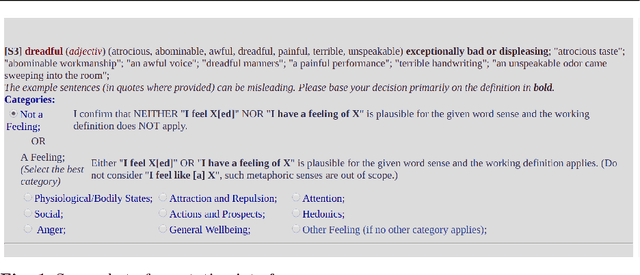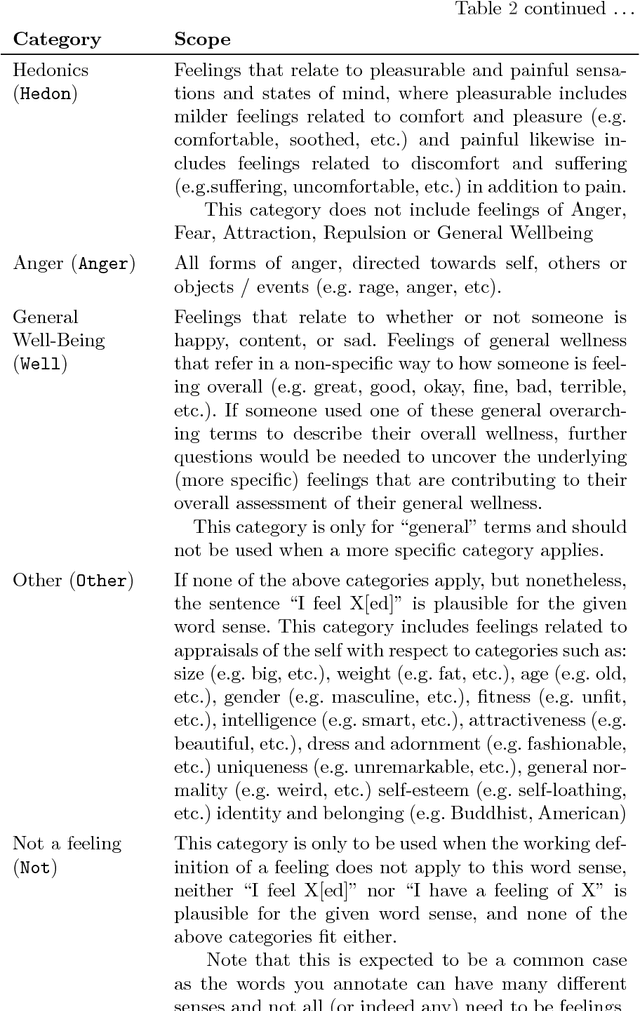Leroy Lowe
WordNet-feelings: A linguistic categorisation of human feelings
Nov 06, 2018



Abstract:In this article, we present the first in depth linguistic study of human feelings. While there has been substantial research on incorporating some affective categories into linguistic analysis (e.g. sentiment, and to a lesser extent, emotion), the more diverse category of human feelings has thus far not been investigated. We surveyed the extensive interdisciplinary literature around feelings to construct a working definition of what constitutes a feeling and propose 9 broad categories of feeling. We identified potential feeling words based on their pointwise mutual information with morphological variants of the word `feel' in the Google n-gram corpus, and present a manual annotation exercise where 317 WordNet senses of one hundred of these words were categorised as `not a feeling' or as one of the 9 proposed categories of feeling. We then proceeded to annotate 11386 WordNet senses of all these words to create WordNet-feelings, a new affective dataset that identifies 3664 word senses as feelings, and associates each of these with one of the 9 categories of feeling. WordNet-feelings can be used in conjunction with other datasets such as SentiWordNet that annotate word senses with complementary affective properties such as valence and intensity.
 Add to Chrome
Add to Chrome Add to Firefox
Add to Firefox Add to Edge
Add to Edge